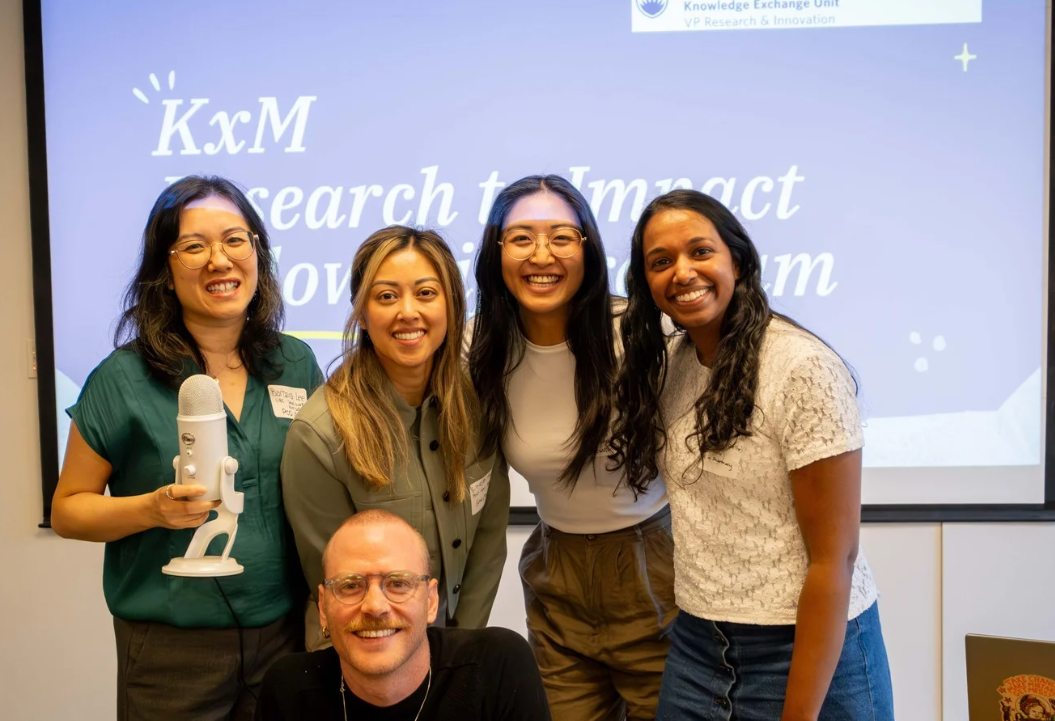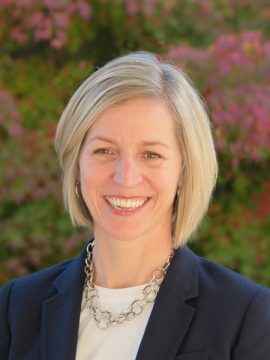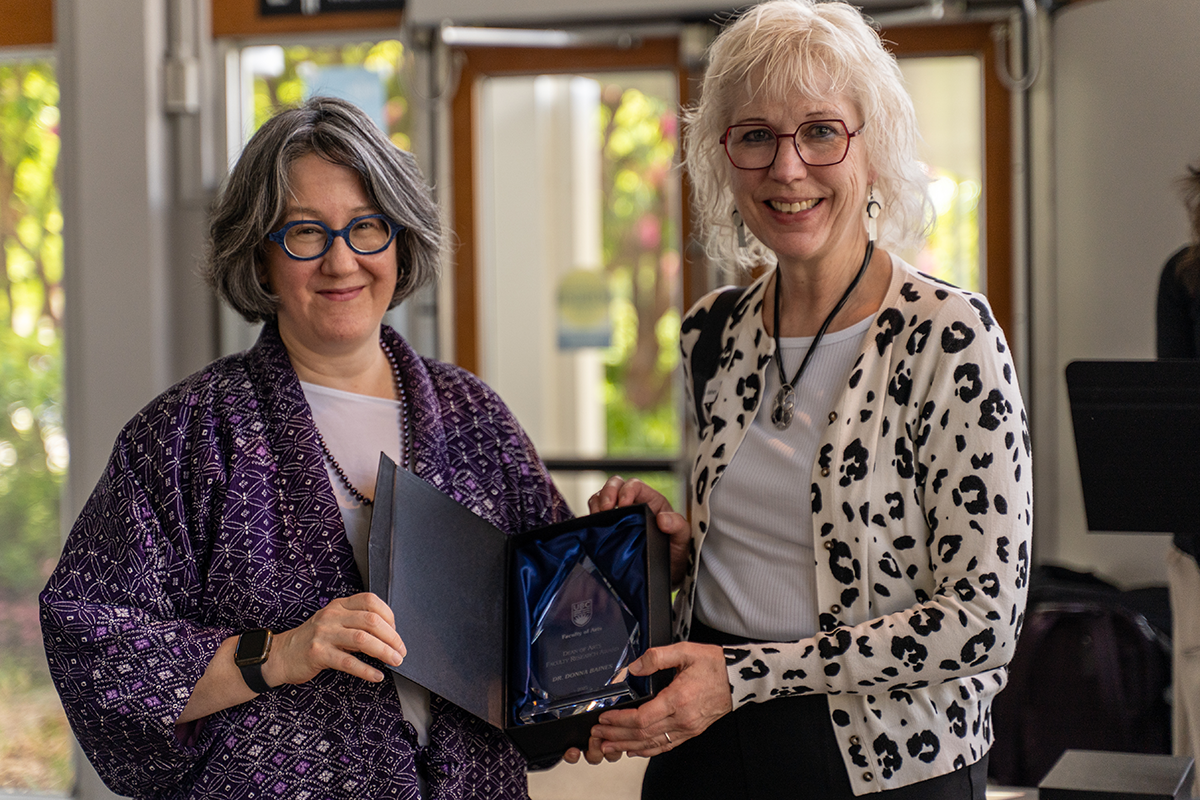Submission to The Social Lens: A Social Work Action Blog by Alina Arias Urban and Karl Urban, PhD Student
My name is Alina, and I am a social worker who recently moved to Canada from Germany. My partner, Karl, is a PhD student at the UBC School of Social Work.
In spring 2016, I started working as a social worker at a refugee shelter run by the German Red Cross in Cologne, Germany. Approximately 60 million people globally were displaced at that time, and the world was experiencing the worst refugee crisis since World War II. While the majority of those people were displaced internally (within their home countries) and 86% of the refugees outside their home country were hosted by developing nations, in 2015 and 2016 Europe was heavily affected by the situation (Amnesty International, 2016). More than a million people were seeking safety from conflict, violence and persecution in the EU, Norway and Switzerland in 2015, a sizable portion of them in Germany (EASO, 2021). Since, unfortunately, the European Union (EU) failed to offer safe and legal ways for refugees to exercise their right to apply for asylum (Amnesty International, 2016), one of the routes most frequently used by asylum seekers was the Western Balkans route: starting in Turkey, crossing Greece or Bulgaria and going north via Austria to Germany (according to the European Commission, 2015).
By October 2015 nearly 700,000 asylum seekers had arrived at Germany’s southern border using the Western Balkans route. Normally, the Dublin III procedure would place the responsibility for processing an asylum claim on the first EU country an asylum seeker enters, thus excessively burdening southern European states. This procedure was temporarily suspended in the fall of 2015, paving the way for Germany to take on the responsibility for all arriving asylum seekers (European Parliament, 2020). German Chancellor Angela Merkel declared at the time, with characteristic charisma, “Wir schaffen das!” (“We can do it!”)
Therefore, in 2015, Germany saw a record high 890,000 immigrants arriving in search of asylum. Most of them formally applied for asylum in 2016, when a record high of nearly 750,000 asylum claims were submitted (BAMF, 2017).
Germany was not well prepared to deal adequately with these large numbers of refugees, as I experienced first-hand on a daily basis in my new job. The shelter I worked at was located in a high school gym—200 refugees lived there and spent their nights on field beds. Most of them were families, some of them with small babies. Even pregnant women had to stay there, waiting for months for more adequate housing opportunities. Although the gym was planned as a temporary shelter in which no one was supposed to stay for more than half a year, some families had to live there for up to eight months because suitable alternatives were scarce.
For the majority of the refugees staying in the shelter, the Red Cross shelter was their first permanent place of residence in Germany after having spent their first months in initial reception facilities in rural locations scattered around the country. It was my and my team’s job to accompany and support the refugees on every step of beginning to build a life in Germany. The situation was chaotic and exhausting—in addition to the lack of adequate housing, the refugees’ access to financial support, health care and education was complicated and slowed down by bureaucratic obstacles. My team and I were busy trying to ensure the refugees’ access to health insurance, making doctor’s appointments, assisting in receiving their payments from the social welfare office, helping them enrol their children in schools or preschools and, most importantly, navigate the asylum system and submit their asylum applications. In 2016, it took the understaffed Federal Agency of Migration and Refugees (BAMF) nearly 9 months on average to issue decisions on asylum claims (not including the time refugees had to wait before being able to file their application!). This long wait left our clients in limbo regarding their future (BAMF, 2017).
But in the following months and years the situation changed drastically. Even before I had started working at the refugee shelter, the EU member states were busy finding ways to prevent further asylum seekers from entering their territory. And so in March 2016, four Balkan states closed their borders to travellers without a visa, making it nearly impossible for refugees to reach Central Europe via the Western Balkans route. Another important step in refusing asylum seekers access to the EU was the migration control deal called the EU-Turkey Deal that came into effect in March 2016. The deal stated that all “irregular” immigrants arriving on the Greek Islands from Turkey were to be returned to Turkey. In exchange, the EU was supposed to resettle one Syrian refugee from Turkey for every Syrian refugee Turkey resettled from Greece, provide financial support of up to 6 billion Euro (C$9 billion), grant visa-free travel for Turkish nationals and restart the negotiations for Turkey’s accession to the EU (Amnesty International, 2016).
The EU-Turkey Deal is highly problematic from a human rights perspective. According to Human Rights Watch, asylum seekers arriving on Greek islands are often detained in so-called “hotspots”—overcrowded, unsanitary and unsafe centres for the reception, identification, and processing of asylum seekers (Frelick, 2016). In addition, the treatment of the refugees sent back to Turkey does not always conform to the Geneva Convention: Turkey violates the principle of non-refoulement by sending refugees back to countries where they may face imminent danger, such as Afghanistan, Iraq and Syria (Amnesty International, 2016). The “success” of these draconian and inhumane measures for Central European countries was measurable: in 2016, the number of asylum seekers arriving in Germany dropped to 280,000 (BMI, 2017) and the number of asylum claims dropped continuously every following year to less than 170,000 in the last pre-COVID year, 2019 (BAMF, 2021).
The drastic changes in asylum policies were tangibly noticed in the life of the refugees and therefore in my daily work in the following months and years. As fewer refugees made their way to Germany, I mostly continued working with the refugees who had arrived in 2015 and supported them on their journey of settling in. In Cologne, little by little all shelters located in gyms and temporary containers were closed and the refugees were transferred into more stable and permanent housing facilities, although it still took a long time for many of them to be able to move into their own, adequately sized apartments. The asylum applications of those I worked with were (mostly) approved and thus their stay in Germany was secure for at least a few years. Families were finally able to begin their lives in Germany. Children made friends and became established in their schools. Some of them dreamed big, like the four sisters from an Afghan family I tutored who wanted to become architects and judges. Adults went to integration classes to learn German and find jobs.
In the following years, the public discourse around refugees revolved increasingly around their utility to the labour market and as a solution to Germany’s rapidly aging population. This development was in line with shifts towards ‘activating’ social policies in Germany over the past two decades (Lessenich, 2012). Refugees, who arrived seeking safety from violence, were viewed as an economic commodity. This resulted in bureaucratic hurdles being removed and programs being implemented to enhance the integration of refugees into the labour market (Carstensen et al., 2018; Klein, 2017). The focus of my work also changed to supporting refugees in the fields of adult education and employment counselling. Although I experienced some surprising success stories like a Syrian refugee getting hired as a high school teacher, for most of the refugees integration into German society still was a long and fraught process marked by struggle, baby steps and only fleeting moments of success.
While new laws passed in 2016 impeding family reunions and simplifying deportation meant hardship for many refugees (Bundesregierung, 2016), the individual life situations of many other refugees who had arrived in Germany in 2015 has certainly improved a lot in the last years. By 2018, about half of the refugees who had arrived after 2013 had found work, more than 40% evaluated their German skills as very good, and most of them were satisfied with their life in Germany (Paiva Lareiro et al., 2020; IAB, 2020).
These measured successes should not distract us from the global nature of the numerous refugee crises, which continue to play out across the world. In 2021, the global refugee situation looks even more grim than in 2015 and 2016: a record number of 80 million people globally were displaced in 2020, 10 million more than the year before (UNO Flüchtlingshilfe, 2020). COVID-19 exacerbated the situation of refugees greatly as they often live in enclosed spaces with many other people, making it difficult to follow current health guidelines. On top of that, refugees, who often work in informal jobs and do not always have access to the social safety net, were hit especially hard by the economic impact of lockdowns (UNHCR, 2020).
Speaking about refugees in Germany and the EU also has to mean speaking about the refugees who are not able to reach safety. At the height of the COVID-19 crisis, 168 countries closed their borders, more than half of them not offering exemptions for refugees. By this measure, the right for asylum was effectively suspended by many countries (UNHCR, 2020). This can be seen in the numbers of asylum claims in the EU, Norway and Switzerland dropping by nearly a third compared to 2019 (EASO, 2021). This includes the mere 120,000 applications lodged in Germany, a level seen last before 2013 (BAMF, 2021). While many European politicians might be happy about these declining numbers, the cost for those unable to reach European borders is frequently tragic. We must not forget that more than 20,000 people have died in the last six years trying to get to safety via the Mediterranean Sea (UNHCR, 2021). Refugees will continue to die at European borders day after day as long as the EU remains “Fortress Europe,” sealed off from people seeking safety and security.
Refugees in Canada and social workers working with them surely face many similar issues to their German counterparts. There are some unsurprising similarities in European and Canadian asylum policy, for example, the Canadian government declaring the United States a safe country in order to impede asylum seekers applying at the southern border. Nevertheless, the context for working with refugees in Canada is also quite different, as most refugees are part of an exclusive group that has gone through the extensive resettlement process and already has the certainty of permanent resident status on arrival (Canadian Council for Refugees, 2021). As I am taking my own first steps in working with this population in Vancouver, I look forward to gaining further insight into the key micro and macro issues of social work with refugees in Canada.
References
Amnesty International. (2016). No Safe Refuge. Asylum seekers and Refugees denied effective Protection in Turkey. https://www.amnesty.gr/sites/default/files/pdf/eur4438252016english.pdf
Bundesamt für Migration und Flüchtlinge (BAMF). (2017). Das Bundesamt in Zahlen 2016. Asyl, Migration und Integration. https://www.bamf.de/SharedDocs/Anlagen/DE/Statistik/BundesamtinZahlen/bundesamt-in-zahlen-2016.pdf?__blob=publicationFile&v=16
Bundesamt für Migration und Flüchtlinge (BAMF). (2021). Schlüsselzahlen Asyl 2020.
Bundesministerium des Innern, für Bau und Heimat (BMI). (2017, November 1). 280.000 Asylsuchende im Jahr 2016. Deutlicher Rückgang des Zugangs von Asylsuchenden, 745.545 Asylanträge. https://www.bmi.bund.de/SharedDocs/pressemitteilungen/DE/2017/01/asylantraege-2016.html
Canadian Council for Refugees (2021). About refugees and Canada’s response. https://ccrweb.ca/en/refugee-facts
Carstensen, A. L., Heimeshoff, L-M., Riedner, L. (2018). Der Zwang zur Arbeit. Verwertungslogiken in den umkämpften Regimen der Anwerbe-, Flucht- und EU-Migration. Sozial.Geschichte Online, 23, 235–269. https://duepublico.uni-duisburg-essen.de/servlets/DerivateServlet/Derivate46215/08_Carstensen_et_al_Zwang_zur_Arbeit.pdf
Bundesregierung. (2016). Asylpaket II in Kraft. Kürzere Verfahren, weniger Familiennachzug. https://www.bundesregierung.de/breg-de/aktuelles/kuerzere-verfahren-weniger-familiennachzug-370360
European Asylum Support Office. (EASO). Latest asylum trends – 2015 overview. https://www.easo.europa.eu/latest-asylum-trends
European Commission. (2015). Managing the Refugee Crisis. Western Balkans Route: State of Play Report. https://ec.europa.eu/home-affairs/sites/homeaffairs/files/what-we-do/policies/european-agenda-migration/background-information/docs/western_balkans_route_state_of_play_report_en.pdf
European Parliament. (2020). Report on the implementation of the Dublin III Regulation. https://www.europarl.europa.eu/doceo/document/A-9-2020-0245_EN.html
Frelick, B. (2016). Greece: Refugee “Hotspots” Unsafe, Unsanitary. Women, Children Fearful, Unprotected; Lack Basic Shelter. Human Rights Watch. https://www.hrw.org/news/2016/05/19/greece-refugee-hotspots-unsafe-unsanitary
Institut für Arbeitsmarkt- und Berufsforschung (IAB). (2020). Fünf Jahre seit der Fluchtmigration 2015. Integration in Arbeitsmarkt und Bildungssystem macht weitere Fortschritte. http://doku.iab.de/kurzber/2020/kb0420.pdf
Klein, J. (2017). Merkel-Diskurs vs. Seehofer-Diskurs. Topisches Pro- und Kontra-Argumentieren in der Flüchtlingskontroverse. Sprachreport, 33(3), 36–44. https://ids-pub.bsz-bw.de/frontdoor/index/index/year/2017/docId/6376
Lessenich, S. (2012). „Aktivierender“ Sozialstaat: eine politisch-soziologische Zwischenbilanz. In Sozialpolitik und Sozialstaat (pp. 41-53). https://doi.org/10.1007/978-3-531-19024-2_3
Paiva Lareiro, P. d., Rother, N., & Siegert, M. (2020). Dritte Welle der IAB-BAMF-SOEP-Befragung von Geflüchteten: Geflüchtete verbessern ihre Deutschkenntnisse und fühlen sich in Deutschland weiterhin willkommen. https://www.bamf.de/SharedDocs/Anlagen/DE/Forschung/Kurzanalysen/kurzanalyse1-2020_iab-bamf-soep-befragung-sprache.pdf?__blob=publicationFile&v=5
UNHCR. (2020). COVID-19 crisis underlines need for refugee solidarity and inclusion. https://tinyurl.com/2ecvcx3y
UNHCR. (2021). Operational Portal. Refugee Situations. https://data2.unhcr.org/en/situations/mediterranean
UNO Flüchtlingshilfe. (2020). Jahresbilanz: Trauriger Rekord. UNO-Flüchtlingshilfe zieht Bilanz: Noch nie waren so viele Menschen auf der Flucht. https://www.uno-fluechtlingshilfe.de/informieren/aktuelles/news/uebersicht/detail/artikel/trauriger-rekord/
THE SOCIAL LENS: A SOCIAL WORK ACTION BLOG - The views and opinions expressed in this blog are solely those of the original author(s) and do not express the views of the UBC School of Social Work and/or the other contributors to the blog. The blog aims to uphold the School's values and mission.


